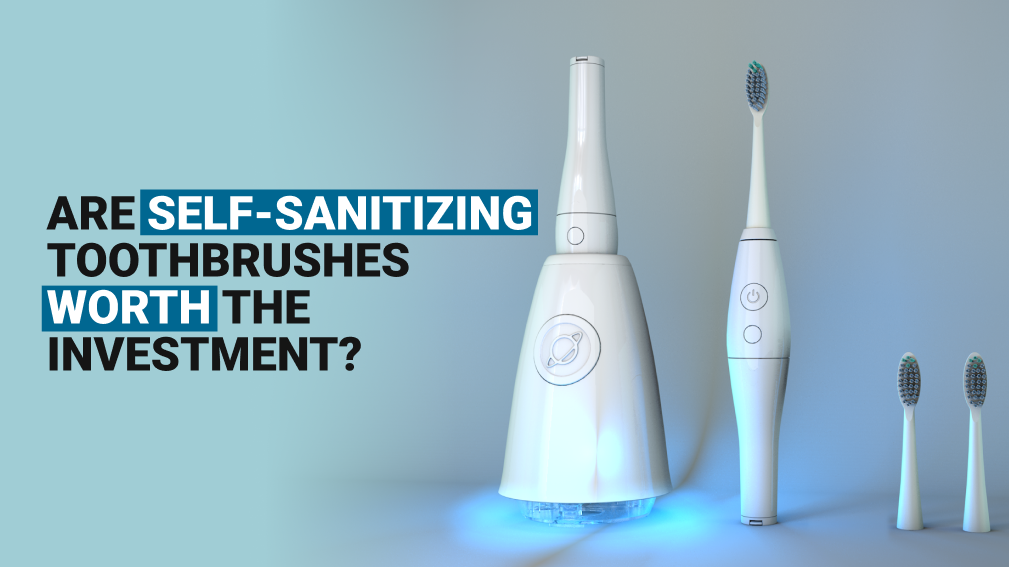Summary
-
Self-sanitizing toothbrushes use UV-C light to kill 99.9 percent of bacteria on bristles.
-
They are highly recommended for shared bathrooms, humid environments, or users with compromised immunity.
-
Models like SonicPro UV combine effective cleaning with modern sanitizing features at an affordable price.
-
Despite higher upfront costs, their benefits in hygiene and convenience can outweigh traditional options.
-
Ideal for those prioritizing health, but not essential for users with strict brushing habits and low exposure risks.
Toothbrushes are essential to daily hygiene, yet they often harbor millions of bacteria due to exposure to humid environments, shared spaces, and improper storage. Traditional brushes, whether manual or electric, offer no protection against germ buildup between uses. This has led to the rise of self-sanitizing toothbrushes, devices that integrate UV-C light to kill bacteria directly on the bristles.
One such solution is SonicPro UV, a toothbrush that integrates germ-killing UV light with sonic cleaning power, without the steep price tag commonly seen in premium brands. This article evaluates whether this type of toothbrush is worth the investment based on use case, hygiene benefits, and overall value.
What Are Self-Sanitizing Toothbrushes?
Self-sanitizing toothbrushes are designed to eliminate germs that remain on brush heads after use. These tools often come equipped with a UV-C light system that neutralizes bacteria and viruses, making them a hygiene-forward alternative to traditional options.
How Do They Work?
SonicPro UV, for example, features a base station that emits UV-C light to sanitize the toothbrush head. This process is automatic and begins as soon as the brush is docked, requiring no additional action from the user. The technology works by disrupting microbial DNA, effectively neutralizing up to 99.9 percent of pathogens. Additionally, the enclosed chamber protects the brush head from airborne germs commonly found in bathrooms.
Key Benefits of Self-Sanitizing Toothbrushes
The main appeal of self-sanitizing toothbrushes lies in their enhanced hygiene and user-friendly design. For those in high-risk environments or seeking maximum cleanliness, the benefits are substantial.
1. Hygiene Boost
Self-sanitizing brushes reduce the bacterial load on toothbrush bristles, which can help prevent recurring oral infections or cross-contamination in shared living spaces. SonicPro UV in particular is ADA accepted and proven to kill 99.9 percent of germs through its UV-C technology.
2. Ideal for Multiple Environments
These toothbrushes are especially effective in spaces where moisture levels are high or storage conditions are less than ideal. Individuals who live in dormitories, hostels, or multi-person households may benefit the most. The same applies to users with weakened immune systems, where minimizing exposure to bacteria is critical.
3. Built-in Convenience
Features like a cordless UV sanitizing base, 40,000 strokes-per-minute motor, 2-minute brushing timer, and brush head replacement reminders contribute to ease of use. SonicPro UV eliminates the need for separate cleaning systems or sanitizing gels, making it an efficient all-in-one solution.
Potential Drawbacks
While self-sanitizing toothbrushes offer considerable benefits, they are not without limitations. For some users, the investment may not justify the cost.
1. Higher Cost
Self-sanitizing toothbrushes typically range between $80 and $200. Although SonicPro UV offers a more affordable alternative at $49.99, users should also account for the price of replacement brush heads, which can range from $10 to $30 depending on the model.
2. Technology Dependency
These devices require electricity and may be less convenient for travelers or individuals who prefer non-digital tools. Over time, UV bulbs may lose effectiveness, and any technical malfunction could impact sanitization performance.
3. Limited Impact Without Proper Habits
It is important to note that no toothbrush, regardless of how advanced, can replace the need for consistent brushing habits. Brushing twice daily for at least two minutes with proper technique remains essential to oral health.
Who Should Consider Investing?
A self-sanitizing toothbrush is not for everyone, but specific users will likely benefit more from this added layer of hygiene:
-
Individuals with gum disease, braces, or frequent oral infections.
-
People living in shared environments such as dorms or multi-person households.
-
Health-conscious consumers seeking cleaner alternatives.
-
Users who travel frequently but stay in high-exposure environments.
-
Tech-forward buyers who value automation and design.
Conclusion
Self-sanitizing toothbrushes offer a modern solution to an age-old problem: keeping your toothbrush clean between uses. With the ability to kill 99.9 percent of germs using UV-C light, they add significant value for users in shared or high-risk environments.
SonicPro UV makes this innovation accessible without compromising on performance. It combines powerful cleaning action, UV sanitation, and user-focused features like a two-minute timer and ergonomic design, all at a price point below most competitors.






